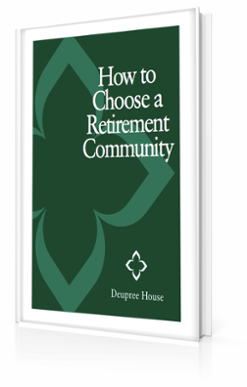
Rather than moving into retirement housing or a senior living community, more and more older adults are opting to prolong their stay in their family homes for as long as possible. This kind of aging in place requires a significant amount of planning to ensure that older adults are able to live safely as they stay among familiar surroundings.
Not too long ago, the Deupree House community talked about ways that older adults could prepare for future healthcare needs by assessing the availability, accessibility, and cost of good senior healthcare providers in the area.
Today, here at ERH, we’re going to be working with you to put together an easy 3 step plan that can help you prepare your home for senior living.
1. Talk to Certified Aging in Place Specialist (CAPS).
Talking to an experienced builder who has experience in aging in place renovations can be a great place to start—especially if you aren’t sure what kind of features you’ll need to make sure that your home will stay safe and accessible as you get older.
The National Association of Home Builders (NAHB) can help you find a certified contractor near you, but don’t let a builder push you into any unnecessary renovations.
- Low maintenance landscaping and exteriors means that you don’t have to worry about being able to touch up chipped paint or weed the garden, but if you already have a service that maintains your grounds, it might not be something you need to include in your plans.
- If you have a 2 story house, you probably should consider how accessible necessities like your kitchen, bath, and bedroom will be in the future. However, you may not need to transition all of the necessities to the first floor, if a chair lift is a viable option.
Have a conversation with your senior healthcare provider about the kind of assistive or support devices you may need in the future, then talk with a trusted financial advisor to plan out a renovation budget.
2. Figure out what changes you should make first.
While we do advocate being prepared for anything the future might bring, you may not need to remodel your whole house in one fell swoop.
Enlarged halls and doorways are a necessity if you need the assistance of a walker or wheelchair to get around in the future, but it may not be renovations that you include in the first phase of work.
The NAHB has an itemized list of aging in place renovations to consider, but there are a few important changes you can make on a limited budget.
Good lighting.
Making sure that every room is well lit can drastically improve in-home safety. Rooms that have a greater tripping or slipping hazard like bathrooms, kitchens, and entryways should have at least two bulbs.
Safety features.
Installing non-skid flooring, especially in rooms with built in slipping hazards like the bathroom or kitchen, is a prudent safety measure for any home owner regardless of age, and making sure that thresholds are flush eliminates potential tripping hazards.
Accessible storage.
Roll out trays, lazy susans, pull-down shelving, and open-fronted or glass-faced storage makes it easier to see into cabinets and retrieved stored items.
3. Paying for Renovations.
Renovations can be expensive, but you may not have to pay for them all out of pocket. There are a few resources out there that seniors can take advantage of to help cover the costs of construction.
- Federal programs run by area Agencies on Aging, Housing and Urban development, Veteran Affairs, or Social Security may offer assistance on home modification projects.
- Some states offer low-interest loans for home modification projects through Assistive Technology projects.
- Public safety grants offer limited funding for renovations designed to reduce the number of falls suffered by older adults are available at both the state and federal level.
- Some long-term care policies may cover aging in place renovations in lieu of assisted living or skilled nursing care.
- A number of private foundations and organizations offer assistance to older adults with debilitating conditions.












